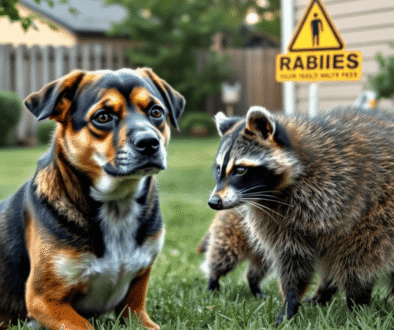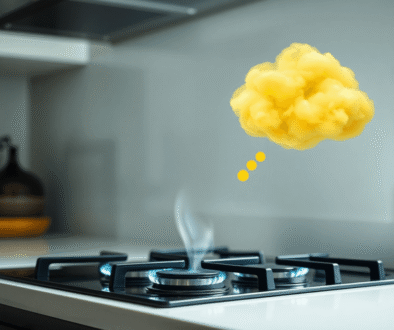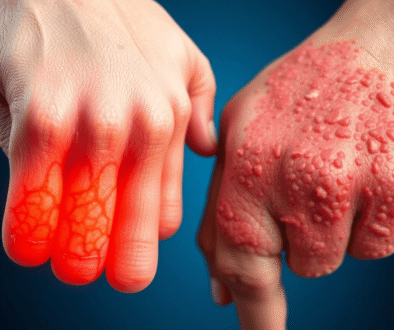Signs of Heat Exhaustion: Early Warning Signals You Can’t Ignore
Long summer days bring backyard barbecues, ball games, and hours outdoors with family and friends. But when the sun beats down, even a fun day at the park or a simple hike can take a dangerous turn. Too much heat and not enough water can wipe us out faster than we think.
Recognizing the first signs of heat exhaustion isn’t just smart—it keeps everyone safe. Early symptoms like tiredness, clammy skin, and dizziness might show up without warning. Knowing what to watch for gives us the chance to act before things get worse.
We’ll break down the key signs so we know when it’s time to take a break, find shade, and cool down. Staying alert can mean the difference between a safe afternoon and a trip to the hospital.
What Is Heat Exhaustion?
When summer heat turns fierce, our bodies can struggle to keep cool. Heat exhaustion is a condition that strikes when we overheat and can’t balance sweat loss with cooling off. It often creeps up after long hours outside in heavy sun, high humidity, or even after indoor exercise without enough water. Many don’t realize they’re at risk until their bodies start to give warning signs.
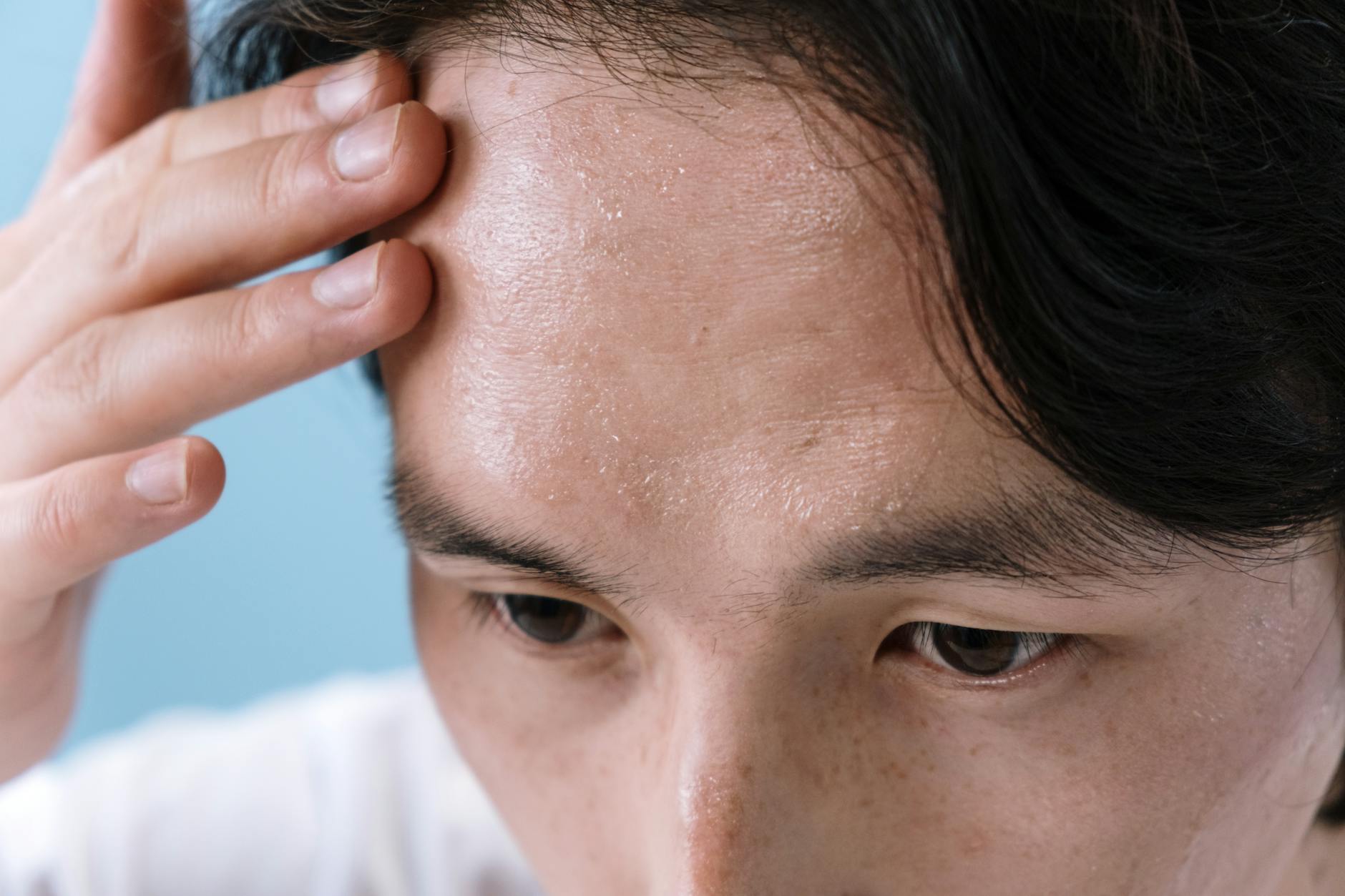
Photo by cottonbro studio
Let’s break down what heat exhaustion really means, how it happens, and why it’s more common than we might think.
The Body’s Response to Heat
Our bodies work every minute to control our temperature. When it’s hot, sweat keeps us cool as it dries on our skin. But if we lose too much water and salt through sweat, or if sweat can’t cool us fast enough, things go wrong quickly. Heat exhaustion happens when hydration and body cooling fall out of balance.
High humidity makes it harder for sweat to evaporate, so the body struggles even more. Activities like sports, working outdoors, or standing in crowded spaces can speed up overheating. Even sitting in a hot car can push us into danger within minutes.
What Causes Heat Exhaustion?
Several factors make us more likely to get heat exhaustion, and some might surprise us:
- Hot, humid weather: Humidity blocks sweat from cooling us down.
- Strenuous physical activity: Sports, yard work, or long walks in heat tax our system.
- Limited airflow: Crowded places or cars with closed windows hold in heat.
- Dehydration: Not drinking enough water or drinks with electrolytes risks fast fluid loss.
- Alcohol use: Alcohol can dry us out and reduce our awareness of symptoms.
- Age and health: Kids, older adults, and people with certain health conditions face higher risk.
Why It’s a Medical Emergency
While heat exhaustion isn’t as severe as heat stroke, it’s a medical warning sign. Untreated, it can quickly progress to heat stroke, which can damage organs and even be fatal. Acting early makes all the difference between a scare and a crisis.
If we spot signs like heavy sweating, weakness, or dizziness, it’s time to cool down and hydrate. According to the Cleveland Clinic and Mayo Clinic, getting out of the heat and sipping water right away can help prevent serious harm.
Common Myths About Heat Exhaustion
Many folks brush off early symptoms, thinking heat exhaustion just makes you tired. But signs can show up even when we’re standing still or sitting in the shade after time in the sun. It’s also not only about high temps—humid days and poor ventilation can be just as dangerous.
Quick action, cooling off, and drinking plenty of fluids can turn things around fast. But ignoring heat exhaustion is never safe. Our bodies rely on us to notice when something’s wrong and make smart choices before symptoms get worse.
Early Warning Signs You Should Never Ignore
Most people brush off feeling a bit tired on a hot day, but heat exhaustion warns us early if we know what to look for. Early signs can show up right on our skin or surprise us with muscle cramps and sudden waves of tiredness. Spotting these warning signals can help us stop a small problem before it turns dangerous.
Changes in Skin: Coolness, Moisture, and Flushing

Photo by Polina Tankilevitch
Our skin sends up some of the first red flags. Early heat exhaustion doesn’t always make skin hot and red like you might expect. Instead, we may notice:
- Cool skin, even in the heat: It almost feels clammy or moist to the touch.
- Sweat that doesn’t dry: Sweat stands out on our foreheads, arms, and neck, making the skin feel wet and sticky.
- Unusual flushing or paleness: Some people turn pale, while others get a reddish look in their cheeks even before they feel sick.
These skin changes tell us our body is struggling to balance its temperature and can’t get rid of heat fast enough. Mayo Clinic shares that cool, moist skin with goose bumps, or odd flushing, are early clues that we need to cool down.
Heavy Sweating and Muscle Cramps
Sweating is our body’s first line of defense when things get hot, but it comes with a downside. Heavy sweating means we lose fluids and salt fast. Without enough replacement, our muscles can suddenly cramp.
Here’s what usually happens:
- Our sweat pours out: The body pushes sweat to the skin to cool down.
- Salt slips away: Every drop of sweat carries out salt and minerals we need to keep muscles working.
- Muscle cramps strike: Without enough salt, muscles tighten or spasm, often in the legs or arms.
It’s normal to sweat while active, but if the sweat seems excessive and comes with cramps, that’s a warning. Cleveland Clinic explains that heat cramps signal salt loss and come before more serious heat problems.
Sudden Fatigue or Weakness
Not all warning signs show up on our skin. Sometimes, heat exhaustion sneaks up with a deep, hard-hitting tiredness. It feels like we hit a wall, even if we haven’t been working that hard.
Look for these red flags:
- Abrupt loss of energy: One moment we feel fine, the next, we struggle to stand or keep moving.
- Weak feeling in arms or legs: Movements may slow, and even simple tasks feel tough.
- Dizzy or lightheaded spells: Fatigue comes with foggy thinking or trouble staying on our feet.
If tiredness comes on fast while out in the heat, we shouldn’t brush it off. Fatigue doesn’t just mean we’re out of shape—it can signal that our body is running low on fuel and running hot. The Red Cross calls out sudden weakness as one of the key signals, and acting early can make a big difference.
Progressive Symptoms to Watch For
Heat exhaustion doesn’t always stop at mild warning signs. If left unchecked, the body’s stress gets worse, sending signals that demand quick action. As the pressure grows, the brain and heart can start to struggle. If we spot these later symptoms in ourselves or others, it’s time to take a break, cool down, and hydrate right away.
Headache and Nausea: Why They Signal Trouble

Photo by Pavel Danilyuk
Headaches and nausea don’t just come out of the blue. When we overheat, our body starts to run low on fluids and salt. That’s when dehydration sets in, often making our heads pound and stomachs churn.
Why does this happen?
- Fast loss of water through sweat thickens our blood and puts pressure on blood vessels, bringing on pain in our head.
- The brain reacts to dehydration and overheating by sending warning signals—headache is one way it tells us to cool down.
- As sweat drains away key minerals, our stomach might protest, causing that telltale queasy feeling.
Heat-related headaches often feel dull, tight, or throbbing, and they won’t go away until we rest and replace lost fluids. Nausea often follows, making it hard to eat, drink, or even move. Ignoring these symptoms can put us at risk for worse problems. The Medical News Today and Healthline outline how dehydration triggers both symptoms and signals serious overload.
If we notice a headache or wave of nausea while sweating, it means our body has pushed its limits. Finding shade, sipping water, and cooling our skin could be the difference between a quick recovery and a trip to the hospital.
Dizziness, Fainting, and Rapid Heartbeat: When Action Can’t Wait
Our bodies fight to stay upright when heat strikes. Dizziness often shows up when blood can’t reach the brain fast enough. If our pulse starts to speed up or we feel weak, it means our body is struggling to keep cool.
What do these symptoms mean?
- Dizziness comes from low blood pressure and loss of fluids, making us feel lightheaded or wobbly.
- Fainting, or passing out, happens when blood flow to the brain drops enough to knock us out—even just for a second.
- Rapid heartbeat is our body’s stress signal. The heart works overtime, beating fast to move blood and cool us.
These symptoms tell us that the situation is now serious. According to Mayo Clinic and UC Davis Health, dizziness, fainting, and a racing heart mean heat exhaustion is getting worse—and we must act fast.
Skip the guesswork:
- Sit or lie down in a cool place.
- Loosen tight clothing.
- Drink cool fluids if awake and alert.
- Avoid standing up too quickly.
Don’t try to push through these symptoms. Fast action can prevent permanent harm. Watching for these signs helps us catch and stop heat exhaustion before it turns into something much worse.
What Makes Some People More Vulnerable?
Most of us think heat exhaustion only happens to those stuck in the sun or running a marathon. The truth is, our bodies don’t all respond the same way to heat. Small differences—age, health, medications, and even daily habits—can make a big gap in how quickly we overheat. If we know who is more likely to be at risk, we can spot trouble faster and act sooner.
Age: Children and Older Adults
Children and older adults feel the heat much more than most. Their bodies don’t manage sudden shifts in temperature as well.
- Children: Kids sweat less and heat up faster. Their small size and high activity levels put them at real risk, even while playing.
- Older adults: As we age, sweat glands work less and the sense of thirst fades. Seniors’ bodies don’t cool as fast, and underlying health conditions often make matters worse.
According to the Mayo Clinic and the CDC, these two age groups lead the list for hospital visits and deaths from heat illness.
Health Conditions That Increase Risk
Certain health issues mean the body can’t keep up when things get hot.
- Heart disease: The heart works harder in heat; weak hearts struggle.
- Diabetes: Some types of diabetes cause dehydration faster or harm sweat glands.
- Obesity: Extra insulation keeps body heat in, so cooling takes longer.
- Respiratory issues: Poor lung function makes it harder to stay cool.
Medications for high blood pressure, heart issues, allergies, or mental health often lower how much we sweat or make us pee more. Both effects cause dehydration even on mild days.
Lifestyle and Environmental Risks
Even our choices and surroundings can put us in harm’s way—sometimes without us even knowing.

Photo by Pixabay
Some common factors include:
- Drinking alcohol or caffeine: Both dry us out, making dehydration worse on a hot day.
- Wearing heavy or dark clothes: These trap heat and stop sweat from working well.
- Lack of air conditioning: Fans alone often don’t cut it in intense heat.
- Outdoor activity or labor: Yard work, sports, or construction during the hottest times increases risk.
Groups like outdoor workers, athletes, and people without steady housing stand at the front lines. Even a short trip outside unprepared may put us in trouble. The National Integrated Heat Health Information System breaks down these risks for anyone spending long hours outside.
Who Should Be Watched Extra Closely
Let’s keep an extra eye on:
- Babies and small kids
- Anyone over 65
- People with chronic illness (especially heart, lung, kidney, or diabetes)
- Those taking medicine that causes dehydration
- Workers or athletes in the sun
- Folks without access to cool shelter
Some of us can bounce back from a day in the sun. Others risk a chain reaction if any one risk stacks on top. Spotting these warnings early keeps summer days safe for everyone.
How To React When You Spot the Signs
Spotting the early warning signs of heat exhaustion is only half the battle. Acting fast is just as important. Whether we feel symptoms ourselves or see them in someone else, the right action can keep things from getting worse. In heat emergencies, every minute counts.
When signs appear, our top goal is to cool down and stay safe. Let’s look at what steps we should follow in this situation.
Get Out of the Heat Fast
The first thing we should do is move ourselves or anyone affected to a cooler area right away. Shade under a tree, an air-conditioned room, or even the inside of a car with working AC is best. If that’s not possible, any shaded spot or even a building entrance is better than staying in the sun.
Remove Extra Clothing
We need to let the body cool down naturally. Tight or heavy clothes trap heat. Loosen or remove as much as is decent, aiming for light, breathable layers. This makes it easier for sweat to do its job and for air to reach the skin.
- Take off hats, shoes, socks, heavy shirts, and jackets.
- Swap dark colors for lighter ones if possible.
- Sit or lie down to avoid falls or further strain.
Cool the Body Quickly
Lowering core body temperature can help prevent heat exhaustion from turning into heat stroke. Here’s how we can help:
- Use cool water: Dampen a washcloth and wipe it on the back of the neck, forehead, underarms, and wrists.
- Fan gently: Use a fan, magazine, or piece of cardboard to circulate air over damp skin.
- Spray or splash water: Lightly mist skin with water, then fan to help the body shed heat even faster.
- Place cold packs (wrapped in a towel) on the neck, armpits, or groin.
If we have nothing else, even sitting near an open freezer or in front of a fan can start the cooling process.
Find more detail on cool-down methods from the Mayo Clinic’s first aid guide for heat exhaustion.
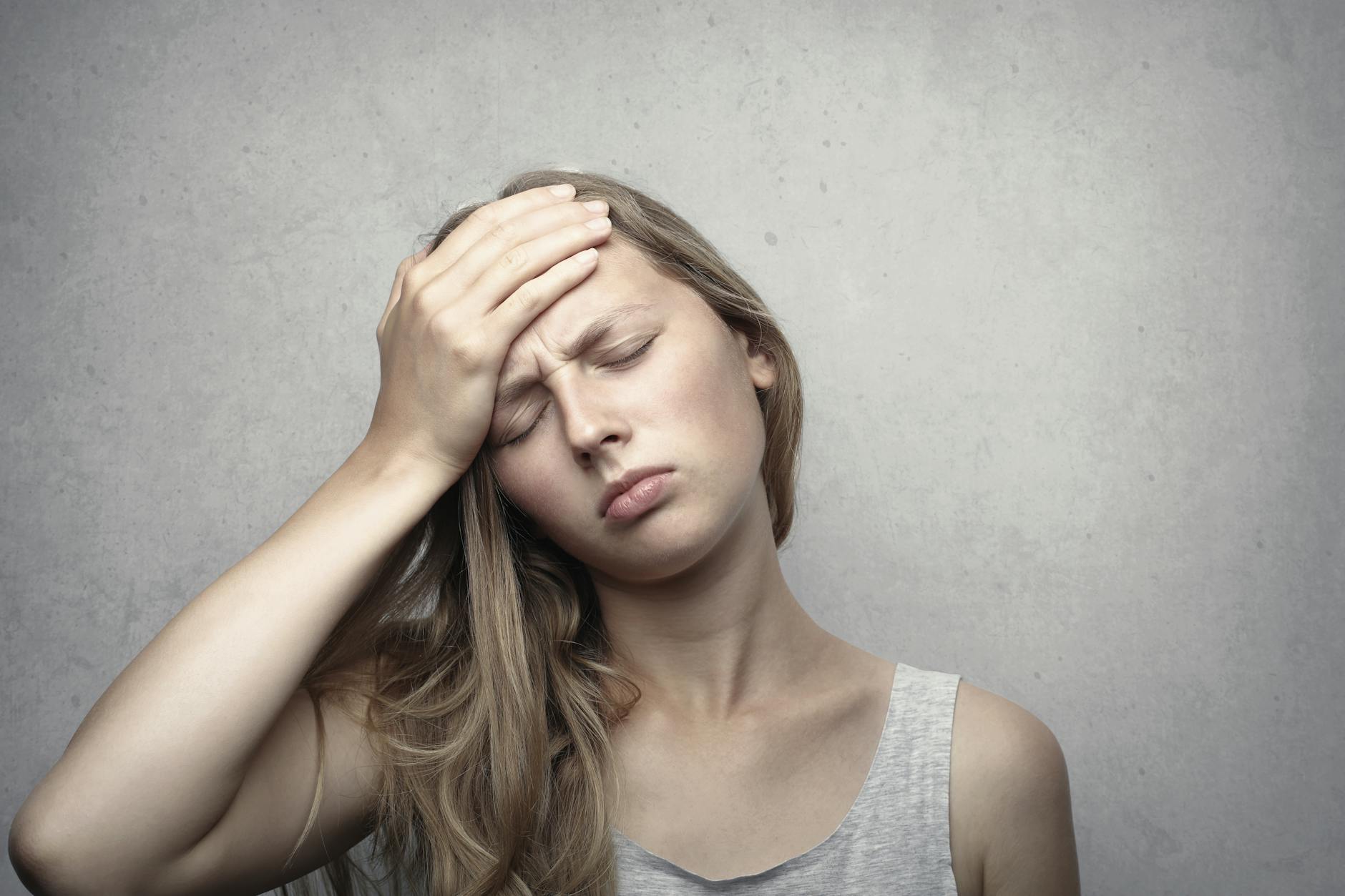
Photo by Andrea Piacquadio
Rehydrate With Cool Drinks
The body loses a lot of water and salt in heat. Sipping water slowly helps replace what’s lost. Sports drinks with electrolytes are even better for cramps or weakness. Avoid drinks with caffeine or alcohol, as they make dehydration worse.
- Offer sips—a big gulp too fast can cause nausea or vomiting.
- Aim for small, steady drinks over 30 minutes.
- If the person can’t keep fluids down, seek help right away.
Watch for Danger Signs
After moving to safety, we can’t let our guard down just yet. Watch for:
- Trouble responding or confusion
- Vomiting or not being able to keep fluids down
- Fainting, chest pain, or shortness of breath
If symptoms don’t get better quickly, it’s time for emergency help. According to the Red Cross, continuing symptoms like vomiting, confusion, or fainting mean professional care is needed.
When to Call for Emergency Help
Sometimes symptoms move fast. If someone passes out, has seizures, stops responding, or stops sweating in extremely hot settings, call 911 right away. Organ damage can start soon after, so never wait if you’re unsure.
Get more advice on emergency steps from the OSHA guide to heat illness first aid.
Quick Checklist: What To Do First
To make sure we never freeze up under pressure, here’s a fast list to keep in mind:
- Move to a cool, shaded area.
- Remove or loosen tight or dark clothes.
- Cool the skin with water and fan air across the body.
- Offer small sips of water or electrolyte drinks.
- Never leave a confused or faint person alone.
- Get medical help if symptoms last or get worse.
By staying calm and acting fast, we can make a real difference. Most people will recover quickly if these steps are taken right away. Small steps, smart actions, and keeping an eye out for each other keep us safe on even the hottest days.
Preventing Heat Exhaustion: Habits That Help
Staying ahead of heat exhaustion starts with a handful of daily habits. The best defense is simple: we build routines to keep our bodies cool and hydrated before hot days catch us off guard. Strong habits let us enjoy the outdoors, work, or play without the fear of overheating.
Drink More Water and Replace Lost Fluids
Without enough fluids, our bodies can’t sweat and cool off as they should. Thirst often lags behind our real needs. This makes it easy to dry out even before we feel thirsty.
- Sip, don’t gulp: We drink water regularly through the day. Before heading out, we start with a glass of water.
- Sports and outdoor work: When active, we choose drinks with electrolytes to replace lost salt and minerals.
- Limit caffeine and alcohol: Both dry out our system fast, so we swap them for cold water whenever we can.
Staying hydrated is the number one way to stop heat exhaustion. For more tips, we check out the Cool Off: Heat Exhaustion guide from UNM Health Sciences Center.
Choose Smart Clothing for Hot Days
Our clothes play a huge part in how we handle the sun. With the right fabric and fit, we let sweat do its job while keeping heat away.
- Wear loose, light-colored clothing: Dark and tight clothes trap warmth, while light hues and loose fits help keep us cool.
- Pick breathable fabrics: Cotton and moisture-wicking materials work best for air flow and sweat.
- Protect with hats and sunglasses: A broad hat shades our face and neck, while sunglasses help prevent sun strain.
When we dress for the heat, we give our body every chance to relax and keep its cool.
Take Cool Breaks and Rest Often

Photo by cottonbro studio
Regular breaks are key, even when we don’t feel tired yet. By stopping before we overheat, we avoid trouble.
- Rest in the shade or indoors: We plan for cool-down breaks every hour.
- Cool showers and wet towels: If we feel hot, we rinse off or use a wet towel on our arms, face, or neck.
- Use fans or AC: Circulated air helps sweat evaporate, cooling us even faster. We make the most of air-conditioned spaces on the hottest days.
Taking breaks and cooling off helps us bounce back and keeps heat exhaustion at bay. Read the Merit Health Rankin guide on preventing heat exhaustion for more cooling tips.
Plan Ahead for the Hottest Hours
The midday sun carries the most risk. Early morning or late evening are our safest times for hard work or long exercise.
- We move big outdoor projects and workouts to before 10 a.m. or after 6 p.m. when we can.
- If we have to be out midday, we double up on shade breaks and water.
- We use weather apps to plan, watching for heat alerts or warnings.
Simple choices make a real difference and save us from stress or illness.
Learn to Listen to Your Body
Our bodies send signals long before we feel faint or sick. Learning to read these cues lets us take action sooner.
- If we get a headache, muscle cramp, or sudden tiredness, we slow down.
- We teach family and friends about warning signs—helping each other stay safe.
The MedStar Health blog on avoiding heat exhaustion offers more on these signs and how we can react fast.
By building these habits into our daily rhythm, we can protect ourselves and those we care about, keeping every summer safer and more enjoyable.
Conclusion
Heat exhaustion can surprise any of us, even after short time in the sun or while doing simple tasks. The signs rarely shout—they often whisper through tiredness, clumsy thinking, or a sudden wave of discomfort. Trusting our gut when something feels off can keep us or someone close out of serious trouble.
Staying alert, knowing what to look for, and acting fast helps catch the problem early. Nobody gets it right every time, but watching for the clues means we face fewer emergencies. We look out for each other, listen to our bodies, and never wait for things to get worse.
Summer should be safe and fun for everyone. Let’s keep an eye out, speak up if something seems wrong, and never hesitate to cool down when needed. If you found this guide helpful, share it and help others stay safe in the heat.
